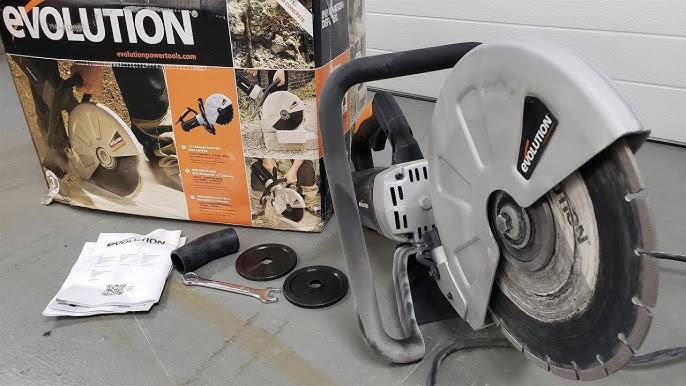How to Match the Right Concrete Disc to Your Construction Needs?

When it comes to construction projects involving concrete, selecting the right concrete disc for your specific task is crucial for achieving optimal results. Whether you’re grinding, cutting, or polishing concrete, the right disc ensures that the job is done efficiently and with the best finish. In this article, we will guide you on how to choose the perfect concrete disc for your construction needs.
1. Understand the Type of Concrete Work
Before selecting a disc, it’s important to understand the nature of the work you’ll be doing. Different tasks such as grinding, cutting, or polishing require different types of concrete discs. Here’s a breakdown of the most common concrete tasks and the discs best suited for each:
- Grinding: This task involves smoothing rough surfaces, removing coatings, and leveling uneven areas. A grinding disc with high durability and aggressive cutting power is ideal for this purpose.
- Cutting: Concrete cutting requires precision and speed. Cutting discs are specifically designed for slicing through concrete and other hard materials.
- Polishing: Polishing discs are used to create a smooth, shiny finish on concrete surfaces, often after grinding to refine the look.
2. Choose the Right Material for the Disc
Concrete discs are made from various materials, each offering different benefits. Understanding these materials will help you match the right disc to your needs:
- Diamond Discs: Diamond discs are highly durable and capable of handling tough concrete. They are ideal for heavy-duty applications like grinding and cutting hard surfaces. If your project involves intense use, diamond discs are the top choice.
- Resin-Bonded Discs: These discs are generally softer and used for finer grinding and polishing tasks. They provide smooth finishes and are typically used in tasks requiring precision, such as surface preparation before applying coatings or polishing concrete.
- Metal-Bonded Discs: These are used for heavy-duty applications requiring high strength and durability, such as aggressive grinding of thick coatings or rough concrete surfaces.
3. Consider the Size and Shape of the Disc
The size and shape of the concrete disc will also depend on the work you’re performing. Common sizes for concrete discs range from 4 to 7 inches, with larger discs available for more extensive jobs.
- Small Discs (4-5 inches): These are perfect for detailed, precise work such as cutting smaller areas or polishing.
- Large Discs (7 inches or more): Larger discs are more suitable for larger surface areas or heavy-duty tasks that require efficient material removal.
The shape of the disc will also affect its performance. For example, cup-shaped discs are ideal for grinding, while flat discs are used for cutting or finishing.
4. Determine the Bond Type
The bond type of the disc determines how the abrasive material is held in place, which affects the disc’s performance and longevity. The most common bond types are:
- Soft Bonds: These bonds are used for softer materials and are often employed in finer finishing tasks. Soft bonds wear down more quickly, exposing fresh abrasives for more cutting power.
- Hard Bonds: Harder bonds are used for tougher materials, such as dense concrete, and are ideal for heavy-duty grinding or cutting applications. These bonds last longer, maintaining the sharpness of the disc over time.
5. Selecting the Right Disc for Your Project
Here’s a quick guide to selecting the right disc based on your construction needs:
- For Aggressive Grinding: Choose diamond grinding discs, turbo discs, or metal-bonded discs for aggressive material removal, surface leveling, and tough grinding.
- For Fine Finishing and Polishing: Resin-bonded grinding discs or polishing discs are ideal for smoothing and polishing concrete surfaces, ensuring a high-quality finish.
- For Cutting Concrete: If you’re cutting through concrete, select a cutting disc with a diamond edge for precision and efficient performance.
If you’re looking for a reliable source of high-quality concrete discs for all types of tasks, Diamtrade offers a wide range of options, including tarcza do betonu. Their selection covers everything from grinding and polishing discs to cutting discs, ensuring that you have the right tool for the job.
6. Test the Disc Before Full Use
Before committing to a full project, it’s always a good idea to test the disc on a small section of the concrete. This will allow you to assess its performance and ensure that it is suitable for the specific task at hand. Testing helps prevent mistakes and guarantees that you’ll achieve the desired results.
Conclusion
Matching the right concrete disc to your construction needs is vital for ensuring efficiency, precision, and durability. By considering the type of work, material, size, bond type, and performance of the disc, you can select the perfect tool for your project. Whether you’re grinding, cutting, or polishing, understanding these factors will help you achieve the best results. For high-quality concrete discs, including tarcza do betonu, visit Diamtrade and choose the right tools for your construction tasks.



